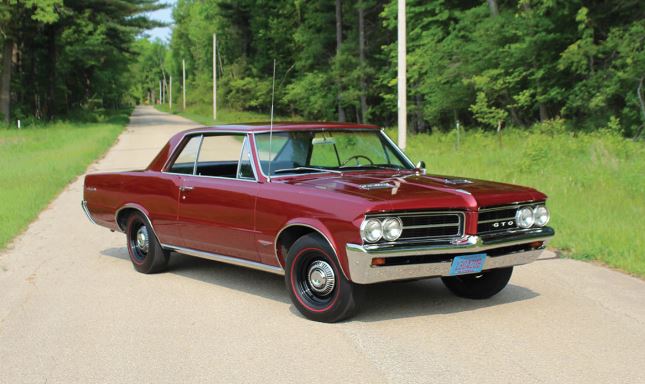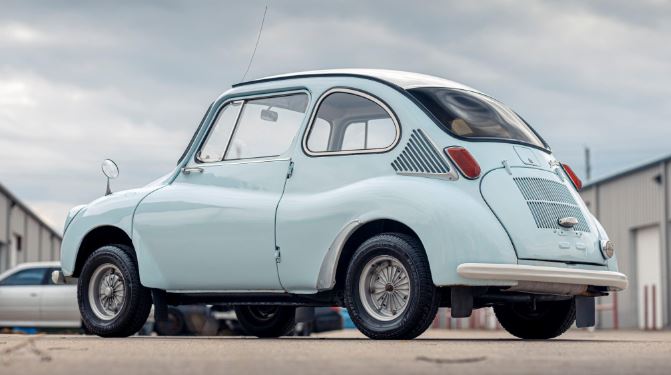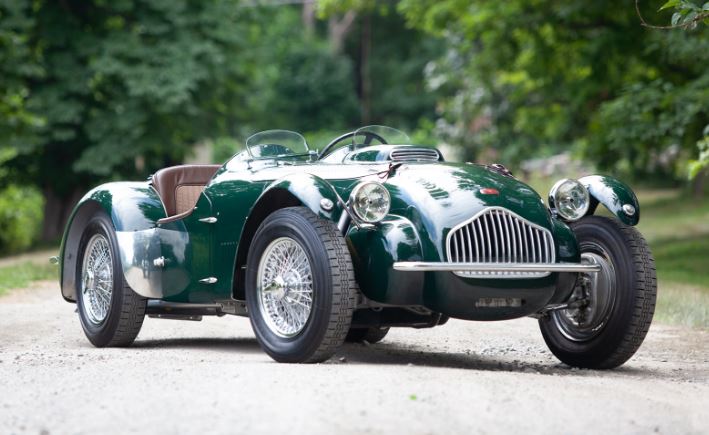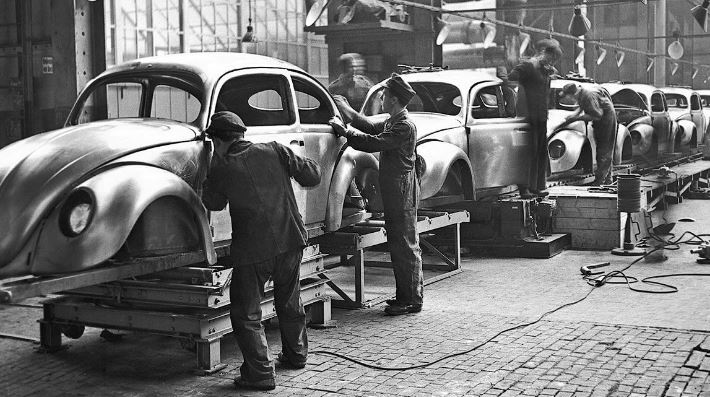The 10 Coolest Vintage Cars of All Time
Are you a fan of vintage cars? If so, you’re in for a treat! In this article, we’ll be taking a look at the 10 coolest vintage cars of all time. From classic muscle cars to sleek sports cars, these vehicles are sure to impress.
We’ll be discussing their unique features, their history, and why they are considered some of the coolest cars ever made. So, buckle up and get ready to take a journey through time as we explore the 10 coolest vintage cars of all time.
1. Pontiac GTO (1964)

The 1964 Pontiac GTO, technically the Pontiac Tempest LeMans GTO, was the car that arguably started the muscle car era in the United States.
It was initially offered as an optional package on the intermediate-sized Pontiac LeMans, available in coupe, hardtop, and convertible body styles.
The Pontiac GTO came out as one of the earliest muscle cars, taking cues from the Ferrari 250 GTO. Even today, it’s still one of Pontiac’s fastest classic cars.
Specifications:
| Feature | Specification |
|---|---|
| Engine | 389 cu in (6.4 L) V8 |
| Horsepower | 325 hp (242 kW) @ 4,800 rpm |
| Transmission | 3-speed manual (standard), 4-speed manual (optional) |
| Drivetrain | Rear-wheel drive |
| Wheelbase | 115.0 in (2921 mm) |
| Length | 203.0 in (5156 mm) |
| Width | 73.3 in (1862 mm) |
| Height | 53.5 in (1359 mm) |
| Curb weight | 3485 lb (1581 kg) |
| Fuel Tank Capacity | 19 gallons (72 L) |
| 0-60 mph (0-100 km/h) | 7.7 seconds |
| Top Speed | 115 mph (185 km/h) |
| Body Styles | Coupe, Hardtop, Convertible |
| Price (as part of LeMans package) | $295 (equivalent to $2,780 in 2022) |
Features:
Here are some of the key features of the 1964 Pontiac GTO:
- Powerful Engine: It came with a standard 389 cubic inch V8 engine, offering impressive performance for its time.
- Performance-oriented Upgrades: The GTO boasted stiffer springs, a larger front sway bar, wider wheels, and dual exhaust pipes, enhancing its handling and power delivery.
- Choice of Body Styles: Unlike many muscle cars of the era, the 1964 GTO offered a choice of three body styles: coupe, hardtop, and convertible, catering to different preferences.
- One of the First Muscle Cars: The GTO is widely recognized as one of the first and most influential muscle cars, playing a pivotal role in shaping the automotive landscape.
- Unique Design Elements: It featured distinctive design elements like horizontally-placed quad headlights (only for 1964), dual hood scoops, and GTO badges, giving it a bold and aggressive look.
- Limited Production: While not initially a massive sales success, the 1964 GTO’s production numbers were relatively low, contributing to its collectability today.
2. Subaru 360 (1966)

The Subaru 360, introduced in 1958, was a tiny, economical car that helped put Subaru on the map. It was also the first car ever sold by Subaru in the United States.
The 1966 model was one of the later versions of the 360, and it came with several improvements over earlier models, including a more powerful engine and a slightly larger interior.
The 360 was classified as a kei car, which is a category of small, fuel-efficient vehicles in Japan. Kei cars are still popular today, and they are a major reason why Subaru is known for its fuel-efficient cars.
Specifications:
| Feature | Specification |
|---|---|
| Engine | 2-cylinder, air-cooled, rear-mounted |
| Displacement | 356 cc (21.7 cu in) |
| Horsepower | 25 hp (18.4 kW) @ 4,500 rpm |
| Torque | 22 lb-ft (30 Nm) @ 3,000 rpm |
| Transmission | 4-speed manual |
| Drivetrain | Rear-wheel drive |
| Wheelbase | 78.7 in (2000 mm) |
| Length | 106.3 in (2700 mm) |
| Width | 51.2 in (1300 mm) |
| Height | 56.3 in (1430 mm) |
| Curb weight | 847 lb (384 kg) |
| Fuel Tank Capacity | 5.3 gallons (20 L) |
| Top Speed | 60 mph (96.6 km/h) |
| Body Style | Sedan, Station Wagon |
| Fuel Economy | 25–35 mpg (9.4–6.7 L/100 km) |
Features:
Here are some of the key features of the 1966 Subaru 360:
- Tiny and Lightweight: Exceptionally small and lightweight, making it nimble and maneuverable in tight spaces, perfect for navigating narrow streets and crowded parking.
- Fuel-Efficient: Known for its impressive fuel economy, offering an economical choice for everyday driving.
- Air-Cooled Engine: Equipped with a unique air-cooled engine, simplifying maintenance and contributing to its lightweight design.
- Rear-Mounted Engine: Featuring a rear-mounted engine, offering a distinct driving experience and efficient use of space.
- Multiple Body Styles: Available in both sedan and station wagon body styles, catering to different needs and preferences.
- Affordable and Practical: Marketed as an affordable and practical car, making it accessible to a wider range of consumers.
- Played a Role in Motorization: Played a significant role in post-war Japan’s motorization, offering an accessible and efficient transportation option.
FOR MORE CLICK ON NEXT…!!!



